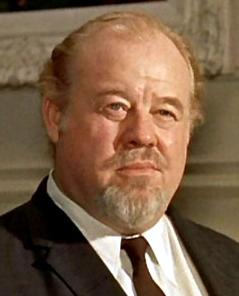The "Huron Carol" is a Canadian Christmas hymn, written probably in 1642 by Jean de Brébeuf, a Jesuit missionary at Sainte-Marie among the Hurons in Canada. Brébeuf wrote the lyrics in the native language of the Huron/Wendat people; the song's original Huron title is "Jesous Ahatonhia". The song's melody is based on a traditional French folk song, "Une Jeune Pucelle". The well-known English lyrics were written in 1926 by Jesse Edgar Middleton and the copyright to these lyrics was held by The Frederick Harris Music Co., Limited, but entered the public domain in 2011.
Mockin' Bird Hill is a song written in 3/4 time by Carl Jularb, with lyrics by George Vaughn Horton and perhaps best known through recordings by Patti Page, Donna Fargo, and the duo of Les Paul and Mary Ford in 1951.
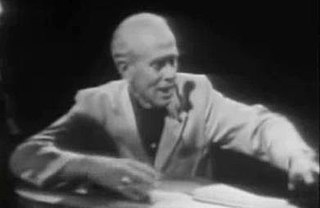
John Jacob Niles was an American composer, singer, and collector of traditional ballads. Called the "Dean of American Balladeers", Niles was an important influence on the American folk music revival of the 1950s and 1960s, with Joan Baez, Burl Ives, Peter, Paul and Mary, and Bob Dylan, among others, recording his songs.

Anita Jean Grilli, known professionally as Anita Kerr, is an American singer, arranger, composer, conductor, pianist, and music producer. She recorded and performed successfully with her vocal harmony groups in Nashville, Los Angeles, and Europe.
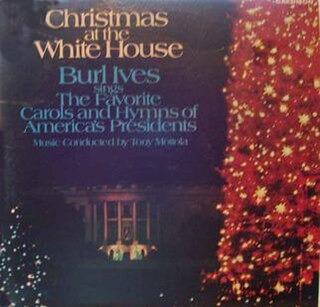
Christmas at the White House: Burl Ives Sings the Favorite Carols and Hymns of America's Presidents is a 1972 album by Burl Ives. It purports to be a collection of twelve presidents' favorite Christmas songs. It has not yet been released on CD.

Originally released in August 1941 on Okeh Records, Okeh Presents the Wayfaring Stranger is an album consisting of four 10-inch records by Burl Ives. This set marked Ives's debut as a recording artist. He accompanies himself on the guitar as he sings twelve folk songs.

The Versatile Burl Ives! is a 1961 album by Burl Ives, containing his hit single "A Little Bitty Tear." The album reached No. 35 on Billboard's 1962 Pop Album Chart. In the same year, "A Little Bitty Tear" climbed to No. 1 on Billboard's Adult Contemporary Chart, No. 2 on the Country Singles Chart, and No. 9 on the Pop Singles Chart. The pop, country, and folk songs on this album were selected to highlight the folk singer's versatility. Some of his performances, such as his cover of Johnny Cash's "I Walk the Line," represent a significant departure from his earlier repertoire. Ives is accompanied by the Anita Kerr Singers and Owen Bradley's orchestra.

Songs of the West is one of several albums from the early 1960s that signalled Burl Ives's move away from folk music into country western and pop. In Ives's discography this album is immediately preceded by The Versatile Burl Ives! and followed by It's Just My Funny Way of Laughin', two Decca albums containing songs that earned Ives his highest rankings on Billboard's pop, country, and easy-listening charts.
"Christmas on the Sea," also known as "Christmas by the Bay," is an old New England song with music by George Frederick Root and lyrics by Hezekiah Butterworth. Reportedly it was President Theodore Roosevelt's favorite Christmas song. Among the few artists who have recorded it are Burl Ives on the albums Christmas at the White House (1972) and Christmas by the Bay (1977) and Stan Ransom on his albums North Country Christmas (1994) and My Long Island Home (1997).
"The Seven Joys of Mary" is a traditional carol about Mary's happiness at moments in the life of Jesus, probably inspired by the trope of the Seven Joys of the Virgin in the devotional literature and art of Medieval Europe. Though not traditionally associated with Christmas, it has become so in the modern era.

The American folk-music revival began during the 1940s and peaked in popularity in the mid-1960s. Its roots went earlier, and performers like Josh White, Burl Ives, Woody Guthrie, Lead Belly, Big Bill Broonzy, Richard Dyer-Bennet, Oscar Brand, Jean Ritchie, John Jacob Niles, Susan Reed, Paul Robeson and Cisco Houston had enjoyed a limited general popularity in the 1930s and 1940s. The revival brought forward styles of American folk music that had, in earlier times, contributed to the development of country and western, jazz, and rock and roll music.
"The Friendly Beasts" is a traditional Christmas song about the gifts that a donkey, cow, sheep, camel, and dove give to Jesus at the Nativity. The song seems to have originated in 12th-century France, set to the melody of the Latin song "Orientis Partibus". The current English words were written by Robert Davis (1881-1950) in the 1920s.

Historical America in Song, released in 1950 by Encyclopædia Britannica Films, is an album set by folk singer Burl Ives. Each of the six albums consists of five 12-inch vinylite records, for a total of thirty 78 rpm records. Each album has its own cover with a drawing of the Washington Monument on it.

A classic folk album by Burl Ives, The Return of the Wayfaring Stranger is a 78-rpm set consisting of four 10-inch discs. Released in 1949, the album was concurrently presented as a 10-inch LP, assigned the catalog number CL-6058. On February 28, 1955, Columbia expanded to 12 inches The Wayfaring Stranger, a Burl Ives album dating back to 1941, originally containing twelve tunes and initially called Okeh Presents the Wayfaring Stranger. Included in the 1955 collection were all nine songs from The Return of the Wayfaring Stranger. In August 1960, Columbia, using a slightly shortened title, Return of the Wayfaring Stranger, released a 12-inch LP of 13 different selections recorded by Burl Ives between 1949 and 1951. The 12-inch versions of The Wayfaring Stranger and Return of the Wayfaring Stranger were transferred to CD format by Collectables Records on November 14, 2000. Each disc contains bonus tracks. Currently, both CDs are in print.

Australian Folk Songs is a 1958 album by Burl Ives. During his visit to Australia in 1952, invited there by the Australia Broadcasting Commission, Ives met the Reverend Percy Jones, a professor of music at the University of Melbourne. The two men compiled a book of Australian folk songs and Ives recorded an album, "collected and arranged" by Jones, which were later released in the United States and elsewhere as Australian Folk Songs.
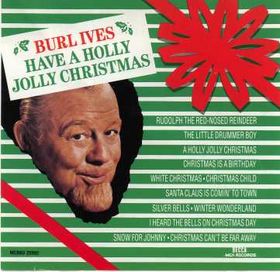
Have a Holly Jolly Christmas is a Christmas album by American folk singer Burl Ives, first released by Decca Records in October 1965.
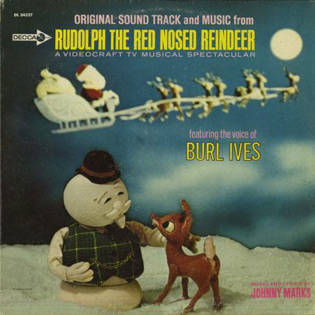
Rudolph the Red-Nosed Reindeer is a soundtrack album to the 1964 Rankin/Bass television special of the same name. The original cast recordings from the TV special are supplemented with instrumental versions recorded by the Decca Concert Orchestra. All songs used in the television special were written by Johnny Marks.

Christmas Greetings is a studio album of phonograph records by Bing Crosby released in 1949 featuring popular Christmas songs.


